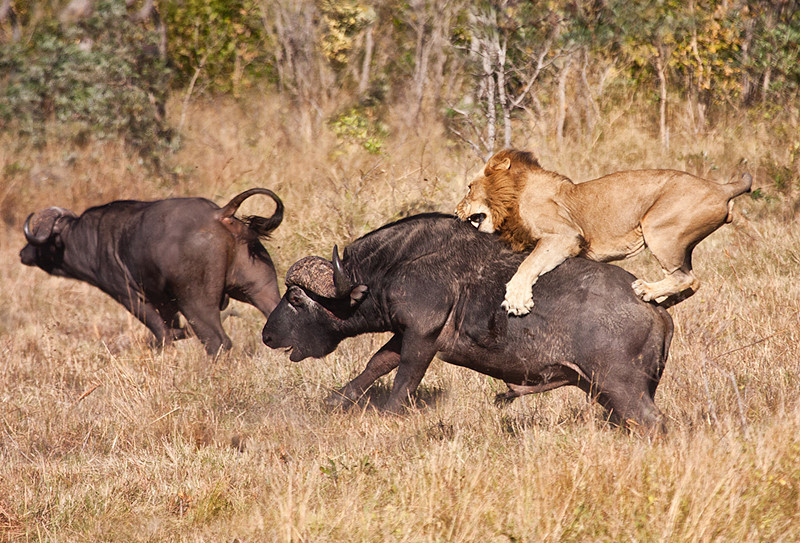14.8 Plants and animals of the savanna
 Savanna is a type of open grassland vegetation. Savannas can be found in the African tropical zone. They have formed in regions that experience both a rainy season and a dry season.
Savanna is a type of open grassland vegetation. Savannas can be found in the African tropical zone. They have formed in regions that experience both a rainy season and a dry season. The vegetation of the savanna consists of grasses, shrubs and trees. The long dry season is difficult for the flora of the savanna. During the dry season, the grass dries out and the trees and shrubs drop their foliage. The landscape becomes brown. Finally, as the dry season gives way to the rainy season, large thunderstorms bring large amounts of rainfall to the savanna. As a result of this, the landscape becomes green once again.
Savannas are suited for cattle farming. A number of nature reservations have been established in some savannas, for example in Kenya. In these reservations, hunting animals and raising cattle is prohibited. The reservations attract numerous tourists every year – who wouldn't want to see a lion or an elephant in the wild?
The grassland of the savanna accommodates a large variety of different animals. The largest herbivores include the buffalo, the giraffe and the rhinoceros. Savanna herbivores are very selective as to what kinds of grasses they eat. Different species eat different grasses, which means that there is no competition between them. The herbivores of the savanna provide food for the savanna's predators, the most well-known of which is the lion.